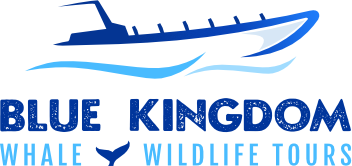Lighthouses of the Salish Sea
Over 4,500 miles of coastline and the 419 San Juan Islands make the Salish Sea a beautiful paradise for sea life! It’s exciting to cruise around in pure wonder of what awaits around each corner or little rookery. It also makes for complex navigation especially prior to the invention of our modern day GPS and radar systems. Around the mid to late 1800’s the process of establishing lighthouses and fog horns throughout these waterways became pertinent. There are now over 40 lighthouses in total that help map out the points and borders along the many islands and coastlines of the Salish Sea. We have highlighted just a few key ones below that we cruise by regularly during our tours.
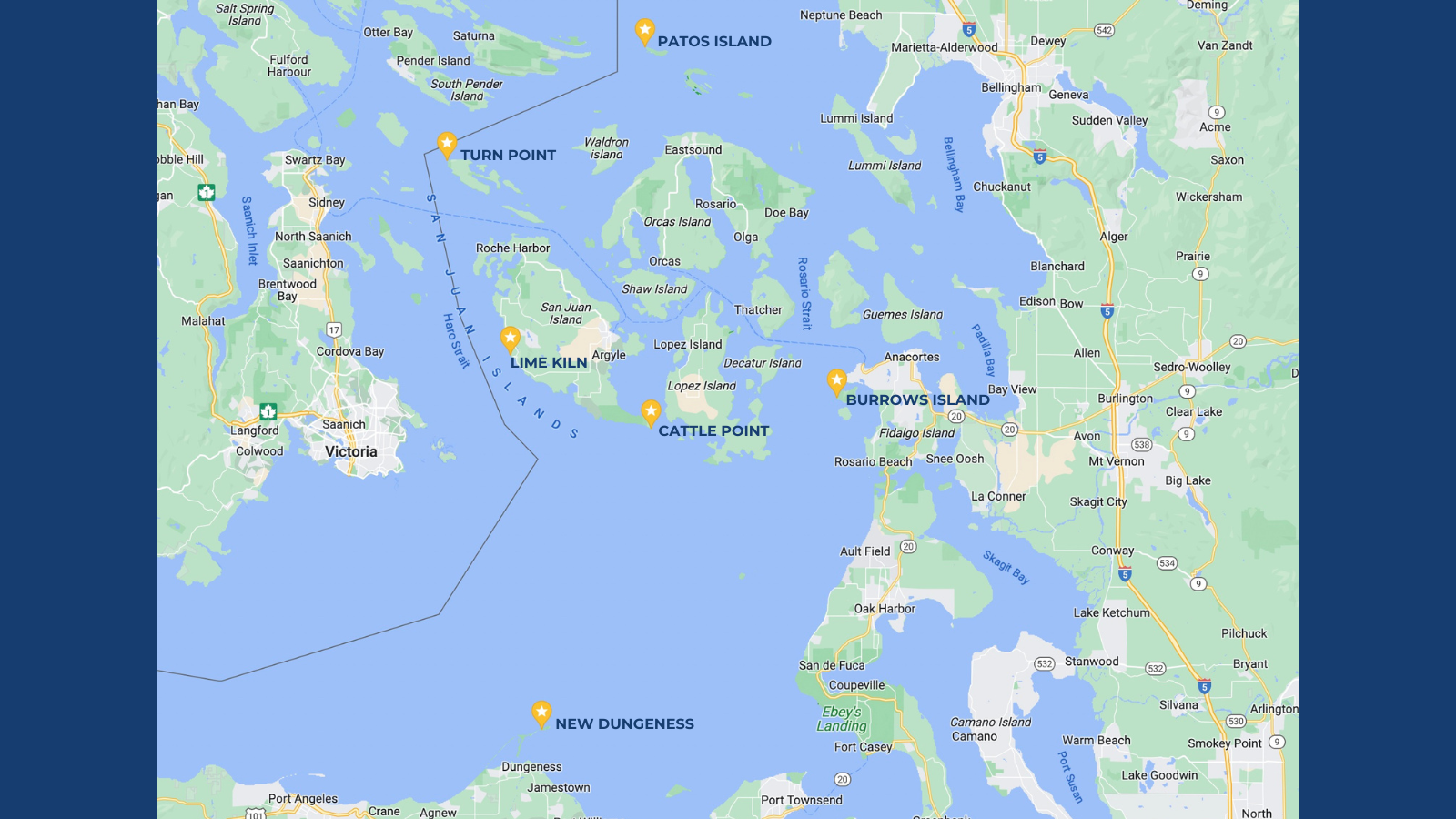
Burrows Island Lighthouse
Located just around the corner from our base is Burrows Island with its lighthouse marking navigation through the Rosario Strait. Due to the increase in ship traffic through the larger straits between the U.S. and Canada, this was a vital location marking the entrance to Rosario Strait, which funnels between the San Juan Islands and the mainland coast. First lit in April of 1906, the location required a derrick (crane) structure to be constructed in order to deliver supplies up the rocky cliffs and shoals. Around this time, many of the former lighthouses were being upgraded to the more effective, fourth-order fresnel lens and louder trumpets. Fortunately this lighthouse was designed with these adaptations as part of the initial plans. The site consists of four buildings, the lighthouse, a duplex, a small coal and oil building, and the boathouse and workshop. During the first three months in service, the fog horn surprisingly did not need to be sounded at all. However, the necessity of this horn soon became apparent as the following year it was sounded for about 329 hours and burned through over 215 gallons of oil. In 1972 along with many local lighthouses, the Burrows Island Lighthouse was automated and no longer required a lightkeeper. Over the years since, it suffered vandalism and was in dire need of repair. Thanks to the Northwest Schooner Society whose efforts are driven to reclaim pieces of history, this location has been under a long-term restoration project and remains in their care.
Cattle Point Lighthouse
At the South end of San Juan Island sits Cattle Point Lighthouse. Essentially at the opposite side of the San Juan Islands, in contrast to Burrows Island Lighthouse. Cattle Point was designed to aid with navigation along the Haro Strait which is the other highly trafficked waterway for shipping to Northern waters along Canada. Back in 1846 after the establishment of the 49th parallel, the specific border was yet to be defined within the San Juan Islands. The confusion over the border being set between the Haro Strait or Rosario Strait was disputed for about 25 years, including a famous battle known as the “Pig War” in which the only casualty was one pig. During this time, joint military camps were set up on San Juan Island as the “English Camp” and the “American Camp.” Eventually it was resolved that San Juan Island would be part of the U.S. and the border just West of the island along the Haro Strait. George Jackle, a son of one of the soldiers from the American camp, was the first to establish a navigational aid in 1888, where Cattle Point Lighthouse now stands. This was a simple, kerosene lens-lantern that he would tend to regularly. The U.S. Navy also used this site for an early radio compass station, transmitting location signals to nearby ships. Eventually the present day lighthouse was erected in 1935. It is also one of the most pictured lighthouses in the area that it was requested for use in an Exxon commercial in the 1980’s. It’s thought that Cattle Point was given its name due to the numerous cattle and sheep that flocked the land in the 1850’s from the nearby location of Hudson’s Bay Company ranch. There are also stories of a stranded vessel carrying livestock that was forced to have their cattle swim to shore near this point.
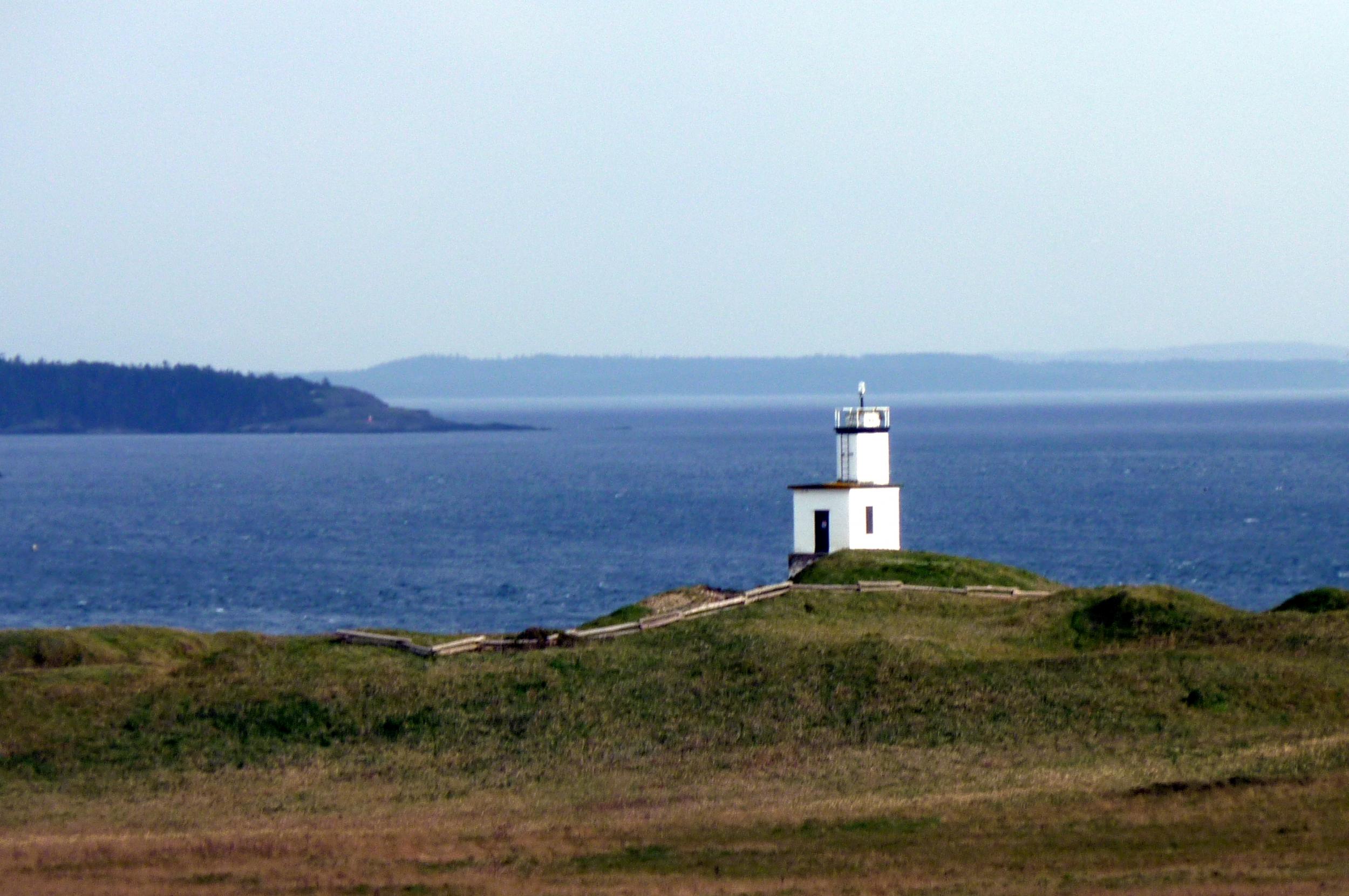
Following the West Coast of San Juan Island as a further guide along the Haro Strait is where we find Lime Kiln Lighthouse. Its name was given due to the lime kilns used in the area for heating limestone (calcium carbonate) into lime (calcium oxide.) The surrounding area provided ample limestone that was quarried and put through the lime kilns, operating for about 60 years. Just north of the lighthouse, there are still remains of some of the old lime kilns that can be seen today. Shortly after this operation ended, it was deemed necessary to construct further navigation aids and in 1913, a light at this junction came to fruition. The structure itself was not finalized until 1919 as one of the last major lights established in Washington State. Today, as part of a State Park, Lime Kiln Lighthouse makes for a beautiful landmark, a great sight for hiking, and even provides great vantage points for gazing out over the water for possible whale sightings!
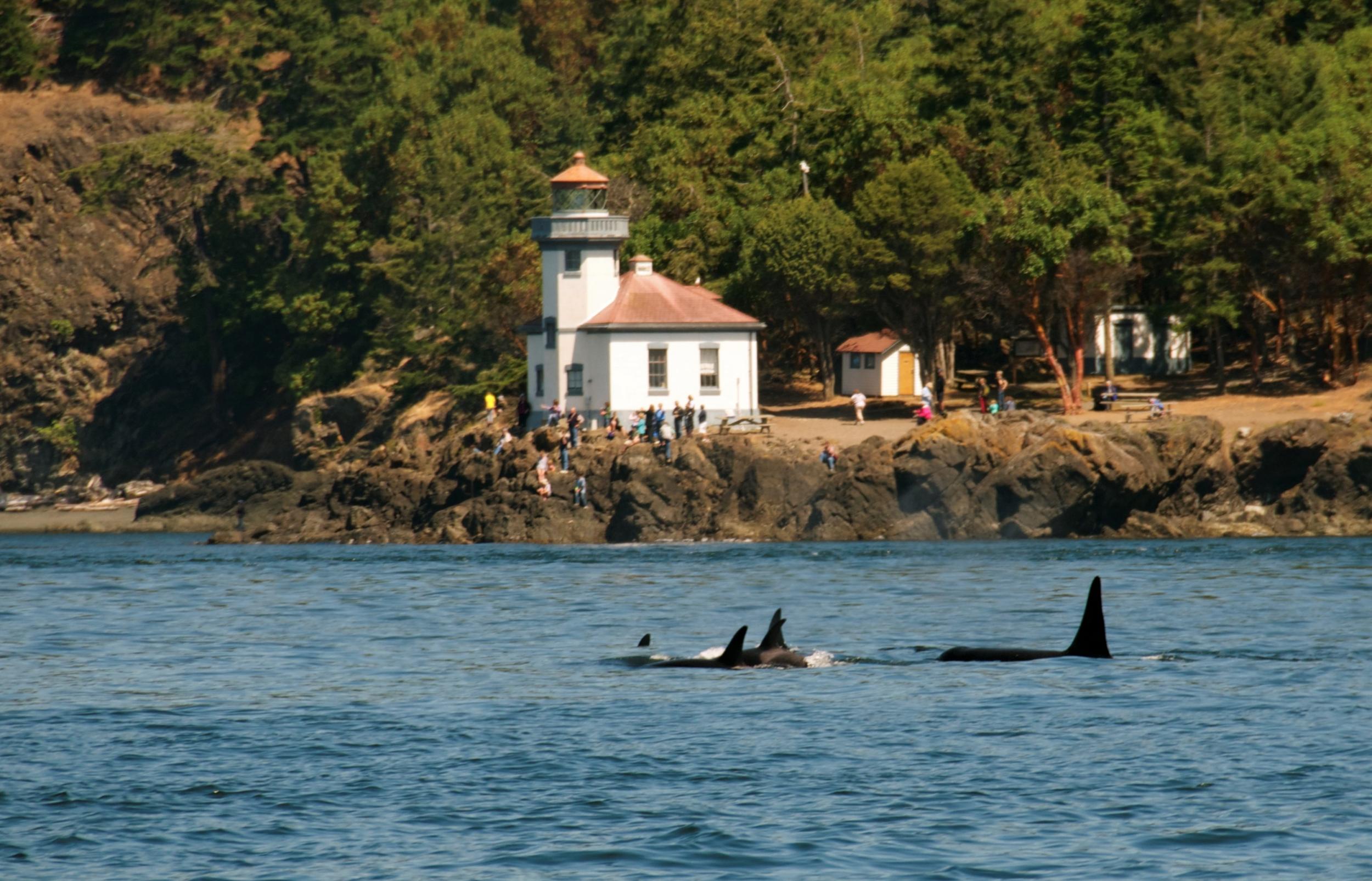
Turn Point Lighthouse
Continuing North up the Haro Strait, ships heading toward the Strait of Georgia or Vancouver are required to make almost a 90-degree right turn just off the coast of Stuart Island. This “turning point” is signaled by none other than Turn Point Lighthouse. The initial structures built in 1893 included the duplex, fog signal building, barn, water tanks, boathouse and a simple stake light. In 1899 the hot-air engines that powered the horn were adapted to oil engines which required massive cooling tanks and eventually an entire oil house that was built 14 years later. The light was also eventually updated in 1936 to a small concrete tower with a 300 millimeter light and a diaphragm foghorn instead of the Daboll trumpet. A wild and frigid night in February of 1897 gave great purpose to the lighthouse and the lightkeepers that were holding watch. That night they heard loud boat blasts and rushed to help a tug boat in distress. Initially it was assumed that only the captain was on board until a slew of drunken crew members were discovered below deck. After pulling the sober captain and crew members out of the dangerously cold waters, the lightkeepers were informed that another barge from the the boat was floating offshore carrying more of the crew. Thankfully all were rescued, but the chaos of the night didn’t end. One of the intoxicated mates became belligerent, pulling a knife and threatening the other crew. He was quickly restrained and spent the rest of the night in the hen house! Along with the other local lighthouses this station also became automated in the 1970’s. Since whales also are found navigating the Haro Strait often, the location was subsequently used to study whale migration by researchers from the University of Washington for years to follow.
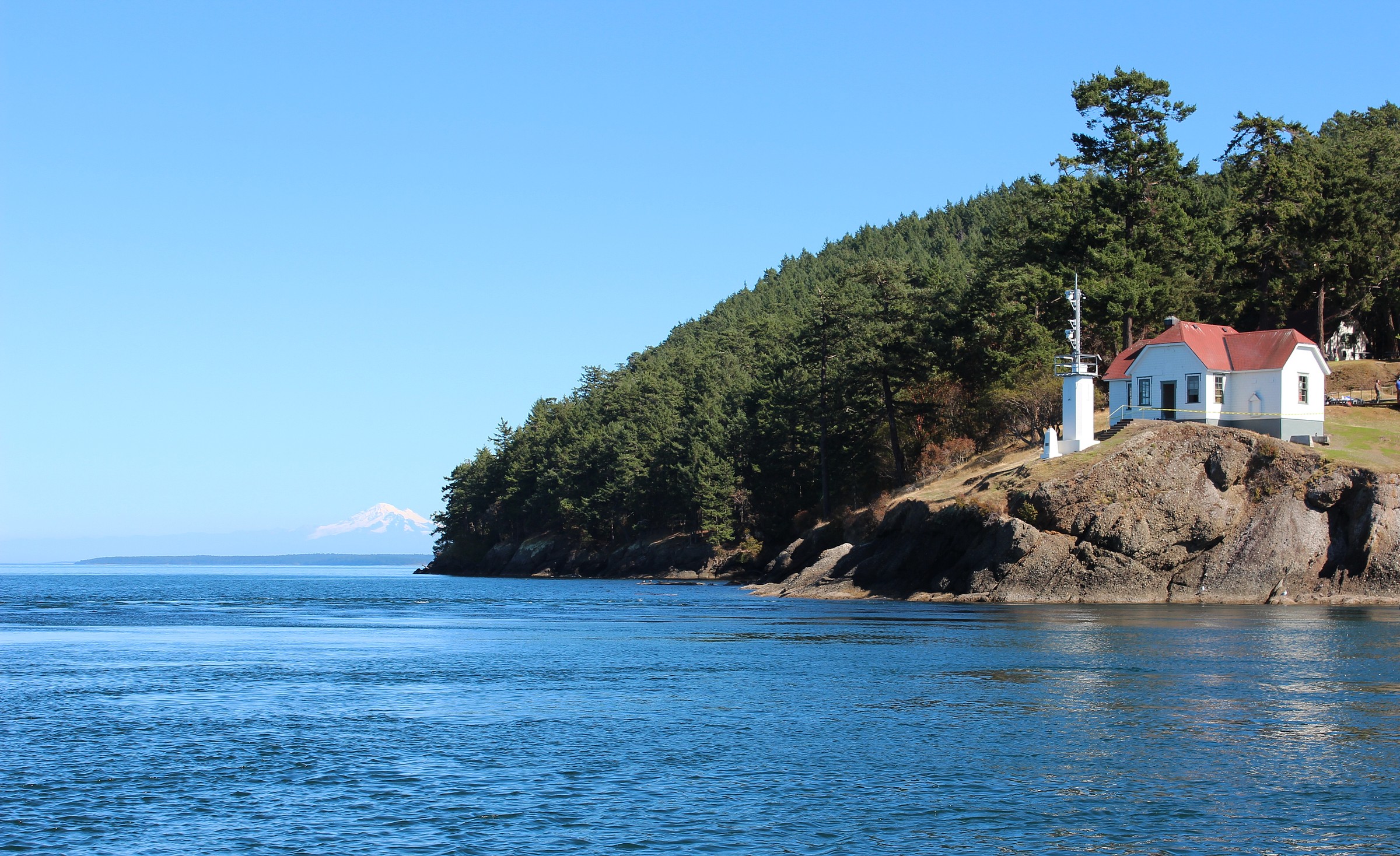
Patos Island Lighthouse
Just on the edge of the border between the U.S. and Canada sits a delightful and picturesque Patos Island Lighthouse. On a clear day you can even be enchanted by the backdrop of Washington’s second highest peak, Mt. Baker all in one perfect setting! Patos Island was discovered during the Spanish Expedition of Francisco de Eliza who gave the island its name meaning “Isle of Ducks.” The location looks up the Strait of Georgia which is known to have turbulent waters due to the variable depths within the strait and the shift to much shallower waters in the narrow channel between Patos Island and Canada’s Saturna Island. These churning waters also cause upwellings of nutrient rich sediment from the seafloor providing an ideal feeding ground for many baleen whales seeking the smaller fish and krill. In 1893 the original post light was installed along with a third-class Daboll trumpet signal for fog. This quickly proved to be inefficient as the barely visible light kept blowing out and the fog signal rarely blasted. Eventually it was adapted in 1908 with a fourth-order Fresnel lens which could be seen from about 7 miles and a new engine to fix the foghorn. This lighthouse was home to many lightkeepers, one in particular whose daughter, Helene Glidden shined light to life at the lighthouse in her novel “The Light on the Island.”

New Dungeness Lighthouse
The New Dungeness Lighthouse acts as a guide along the Strait of Juan de Fuca, which essentially is the connecting waterway between the Salish Sea and the open water of the Pacific Ocean. Built in 1856 on the narrow strip of the Dungeness Spit, this location was the second lighthouse established within what had recently become “Washington Territory.” Originally the lighthouse construction consisted of a 100-foot light tower. This proved to not be the most sound structure in an area prone to earthquakes and especially in an exposed area where it suffered from erosion. After multiple structural cracks were discovered, the tower was shortened down to 63-feet in 1927 and had to be refitted with a repurposed light from the Admiralty Head Lighthouse. In 1994 it was one of the few lighthouses in the U.S. to still have a full time keeper. Shortly after being boarded up by the United States Coast Guard, it was leased to the United States Lighthouse Society where now the New Dungeness Light Station Association continues to man the station 24 hours a day, 365 days a year. Visitors are welcome to explore the area and the lighthouse. Interesting fact: the Dungeness Spit is constantly growing by about 15-feet of land per year! Most of the land is also part of a wildlife refuge providing sanctuary to both marine and land animals as well as over 250 species of birds.
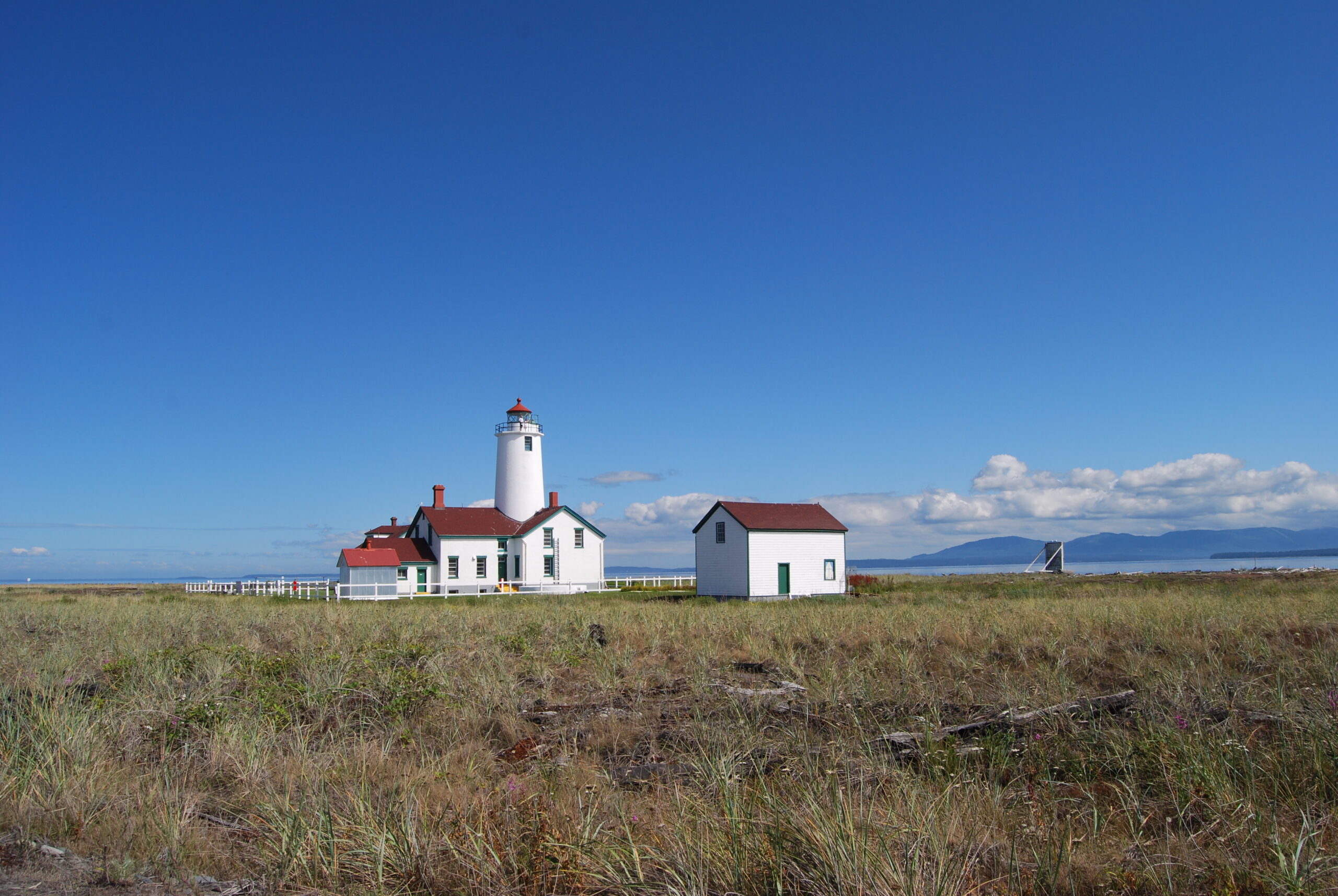
What is so Special About the Fresnel Lens?
The adaptation of the Fresnel Lens (pronounced Frey-Nel), was monumental in maritime history across the globe. A team of French scientists including the inventor, Augustine-Jean Fresnel sought to create a more powerful light that would be recognized by vessels from greater distances. Many of the early lighthouses were designed with simple lamps and mirrors that did little to carry the light, especially in foggy conditions. The Fresnel Lens involved a beehive-like structure of hundreds of pieces of specially cut glass. Rotating the lens around the light creates intense flashes caused by the refraction or “bending” the light, scattering it out so distances sometimes up to 20 miles! Similar to the technology of a telescope– rather than bending the light to make distant objects appear to be nearer, the Fresnel Lens concentrates the light to expand much further. A true lifesaver in maritime history, some theories also suggest that the Fresnel Lens invention may serve us in the future and unlock resolutions to climate change. By using a giant Fresnel Lens between the sun’s light and Earth, these theories propose that the lens can diffuse the solar radiation and as a result cool the Earth. There may be more to see than just the light behind the invention of the Fresnel Lens!
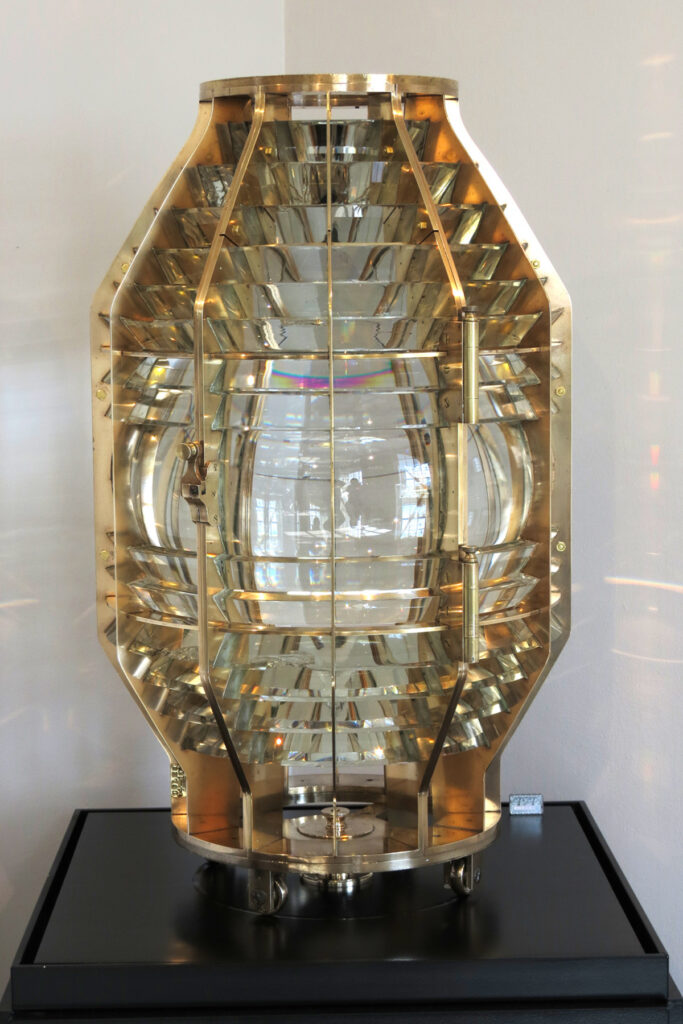
References:
Lighthouse Friends 2001-2023, Burrows Island Lighthouse, accessed June 1, 2023, <https://www.lighthousefriends.com/light.asp?ID=107>
Northwest Schooner Society 2020-2021, Burrows Island Light Station, accessed June 1, 2023 <https://www.burrowsislandlighthouse.com/>
Keepers of the Patos Light, Keepers of the Patos Light: History, accessed June 1, 2023, <https://keepersofthepatoslight.org/>
Lighthouse Friends 2001-2023, Cattle Point Lighthouse, accessed June 1, 2023, <https://www.lighthousefriends.com/light.asp?ID=106>
Lighthouse Friends 2001-2023, Turn Point Lighthouse, accessed June 1, 2023, <https://www.lighthousefriends.com/light.asp?ID=104>
New Dungeness Lighthouse 2022, The Lighthouse, accessed June 9, 2023, <https://newdungenesslighthouse.com/the-lighthouse/>
Lighthouse Friends 2001-2023, Lime Kiln Lighthouse, accessed June 9, 2023, <https://www.lighthousefriends.com/light.asp?ID=105>
